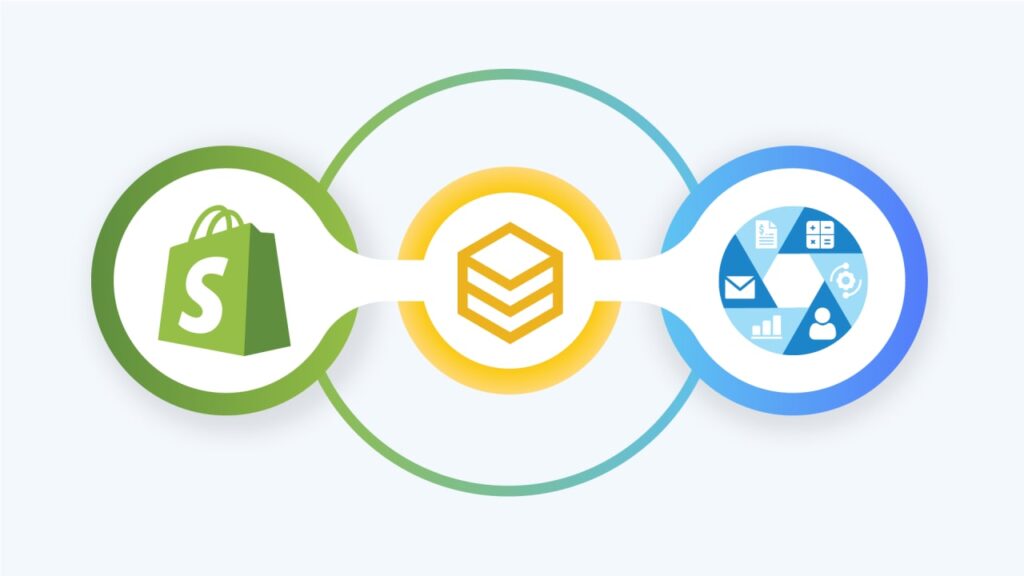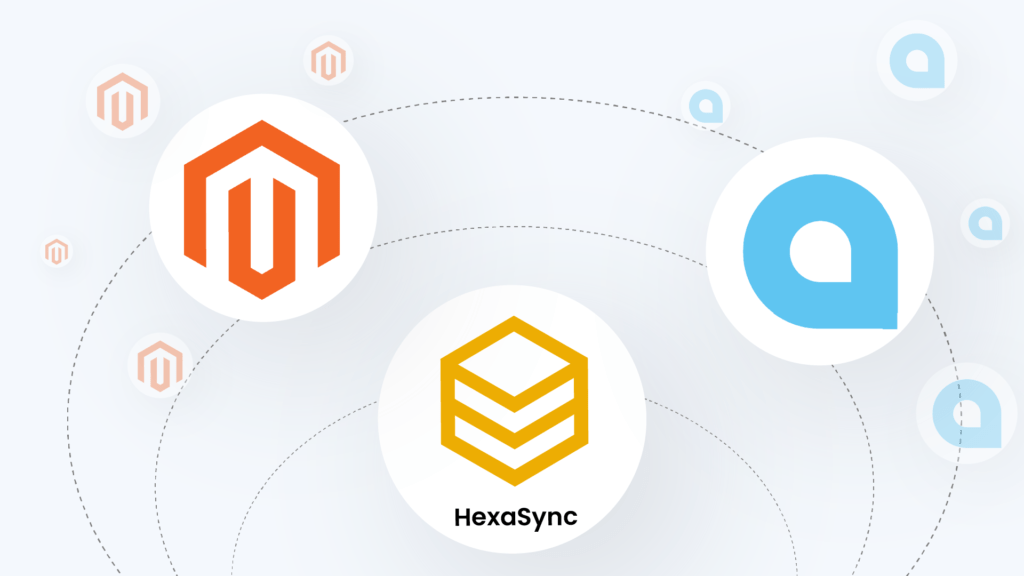B2B retailers are building and/or improving their eCommerce companies more than ever before to reach clients where they are. Let’s take a closer look at some of the most important eCommerce trends that can affect B2B businesses.
Table of Contents
What is B2B eCommerce and why I should sell online?
B2B is a business-to-business eCommerce model, that describes the online transactions between businesses. For example, the exchange of products between a wholesaler and retailer.
B2B transactions typically take place in the supply chain, where one company buys raw materials from another for use in the manufacturing process.

You might be doing B2B without realizing it. While many B2B sellers are suppliers, they aren’t the only form of B2B company out there. You can be both B2B and B2C at the same time, and this is known as B2B2C eCommerce. The wholesaler or manufacturer, on the other hand, distributes items to B2B, who then sells them to the end user.
The point is that the B2B sector is evolving and shifting with millennials involved in the B2B buying process. So let’s take a look at some B2B statistics.
Statistics of B2B eCommerce in the United States
According to Statista, the B2B eCommerce space is growing rapidly. In 2023, an estimated 17 percent of B2B sales are expected to be generated digitally. In 2019, this share was 13 percent. Overall, U.S. B2B online sales are projected to reach 1.8 trillion U.S. dollars in 2023.
In 2019, the global B2B e-commerce gross merchandise volume (GMV) amounted to 12.2 trillion U.S. dollars, up from approximately 5.83 trillion U.S. dollars in 2013. This rapid growth of the global B2B eCommerce space not only mirrors the ongoing digitalization of commerce as a whole but also signals the systematic digital restructuring of the B2B market worldwide.
The shifting needs and expectations of B2B buyers are one of the key reasons for this fast-paced industry growth in the United States. Today’s B2B customers are gradually moving away from traditional purchasing methods and increasingly completing business transactions online.
According to a 2018 survey, the majority of B2B purchasers in the United States conducted research on at least two B2B websites before making a purchase, demonstrating the growing importance of online exposure for firms.

B2B professionals are constantly investing in the introduction and improvement of eCommerce channels in order to boost client demand and remain competitive within their market.
E-commerce will likely affect the future of B2B transactions and the B2B market as a whole, as the digital placement and processing of orders continue to increase efficiency among manufacturers, wholesalers, distributors, and other types of B2B sellers.
Because buyers are shifting, this is wonderful news for B2B sellers. Millennials, a generation that grew up with digital, now account for over 73 percent of the B2B buying process. These new purchasers have higher expectations than their baby boomers and Generation X predecessors in terms of convenience and relevance. This tendency is expected to continue through 2021 and beyond.
Advantages of Using a B2B Ecommerce Platform
Legacy platforms are frequently used by B2B companies. From market to B2B customers, they used to rely on faxes, phone calls, and Excel spreadsheets.
Businesses can now use B2B eCommerce platforms to satisfy the needs of their online customers. No matter where your buyers are, these systems can help you develop an online experience that promotes sales and fulfills orders.

The following are some of the key benefits of B2B eCommerce:
- To provide individualized sales and marketing experiences across sales channels and devices.
- Make it easier for clients to find products by using onsite search and customized navigation on the website
- Offer a variety of payment alternatives, including multiple payment providers and manual invoicing
- Provide particular consumer segments with customized pricing and offers
- Create a system for automating and reviewing incoming buyer registrations.
- Allow B2B customers to effortlessly purchase, monitor, and reorder products
- Use a current eCommerce site or third-party software to synchronize inventory, purchase orders, and customers.
- Utilize dependable APIs to integrate customer data from your ERP or CRM
B2B eCommerce platforms offer a variety of benefits that are critical to business success. Let’s face it, a solid B2B eCommerce platform allows you to handle everything from a single location, allowing for unlimited expansion possibilities.
What to consider before selecting a B2B eCommerce platform
Platform and software
Each platform is built with different levels of coding and development knowledge. And, of course, each platform’s interface differs in a variety of ways. WooCommerce and Magento are the two most popular open-source platforms on the market. While BigCommerce and Shopify are their counterparts as SaaS solutions.
Securing, maintaining, and updating a B2B eCommerce website are handled by the service provider when using SaaS solutions. Your site will be safe from hackers and bugs, and you’ll have more time to focus on growing and expanding your business as a result.

SaaS eCommerce platforms are constantly upgraded by their creators, with new versions issued on a regular basis, which is another benefit.
Installing, managing, and hosting a shop are all tasks that fall under the purview of a user on an Open Source platform. It is true that you have complete control and freedom over your platform, but it is also true that costs connected with hosting, security, and development can quickly mount.
Cost of the platforms
Is there any free eCommerce platform? The answer is yes. Both WooCommerce and Magento are free, open-source software. Free means you don’t have to pay for the cost of the software. However, there are a few essential costs that you’ll have to pay before your eCommerce site can actually go live.
So you might be wondering what costs we’re referring to. It’s the costs of hosting, domain name, and SSL certificates.
On the other hand, SaaS platforms charge a monthly recurring fee. Costs range from $7 a month to $50,000+ a month. But they will handle everything from hosting to securities for you.
Business requirement
You should be able to find the right eCommerce platform by answering the following questions:
- When it comes to eCommerce platforms, what can we do?
- Are we currently aiming to achieve anything specific by using an eCommerce platform?
- Then, in three years, what will these goals look like?
There is nothing that a B2B eCommerce store can not do. In the wholesale market, a B2B eCommerce solution can help you purchase, track, and reorder products for B2B customers.
Use an existing eCommerce store or third-party software to sync inventory, purchase orders, and customers. You want an eCommerce store that could cover the goals of your business and make progress in the future.
How do eCommerce trends affect B2B businesses?
Focus on customer experience
It used to be that any version of an online B2B eCommerce site was reserved for customers who already had an established term account.
These companies want to acquire new customers, and their eCommerce site is the perfect place for that. Online search tools make it easier than ever for new customers to research, find, and place an order.

For merchants to remain competitive, they must go where their customers are. B2B online selling and the purpose of an eCommerce site revolve around bringing in these new customers.
Marketplace integration
B2B marketplaces have the ability to attract new, engaged audiences, which is one of their greatest advantages. This can lead to increased sales, but it can also be a way to reach new markets and test new products around the world.
More than half of all online retail sales in 2020 were made on online marketplaces like Amazon.com, eBay, Alibaba.com, Etsy, and Catch. Integrate your eCommerce with marketplaces will create a wilder ecosystem, increase your brand awareness, and eventually revenue.
Embrace mobile commerce
B2B is growing and changing with mobile shopping. Businesses should optimize their mobile investment for more conversion. The fact that mobile drives an average of over 40% of revenue in leading B2B organizations.

Mobile responsiveness is also one of the key features that make your customers come back. With extra resources, businesses can build their own mobile app that differentiates them from their competitors.
Customer loyalty program
Customer loyalty programs are typically only seen in the B2C space, but B2B buyers have similar expectations. In addition, loyalty programs can increase brand awareness, new customer acquisition, and cross-sell and upsell opportunities.
Customers earn points whenever they make a purchase. This is not new but it is an effective method that encourages customers to buy more. Customers’ loyalty levels bases on their point accumulation.
Back-end systems integration
Ecommerce platforms features are limited and can not meet every B2B expectation. In order for your B2B eCommerce to work properly, third-party systems will help you manage order fulfillment, inventory, as well as customer support better.
However, integrating with different platforms may cause you a lot of headaches without a team of specialists.

Therefore, Beehexa is here to help as an Integration Provider. We focus on connecting eCommerce platforms with systems like ERP, CRM, POS, Accounting to enable real-time data and eliminate data manual entries.
Ecommerce integration is ar top technology need, which increases your operational efficiency, reduces labor costs, and eventually revenue
Final Word
In the world of B2B eCommerce, there are many new developments. In a world where technology and people are constantly evolving, it’s never too late to get started. Learn something new, and decide if it’s right for your business. Ecommerce businesses will be customizing the journey for consumers for the time being.















































